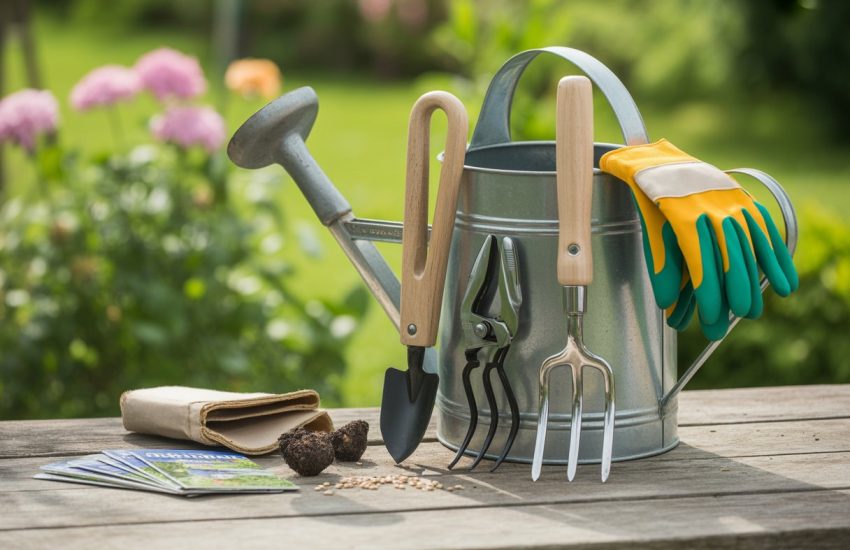Common Problems with Wild Ginger and Solutions for Healthy Growth
Wild ginger, a tough groundcover native to North America and parts of Asia (Japan too), still hits some bumps along the way. You might see poor growth, yellowing leaves, or signs of pest trouble.
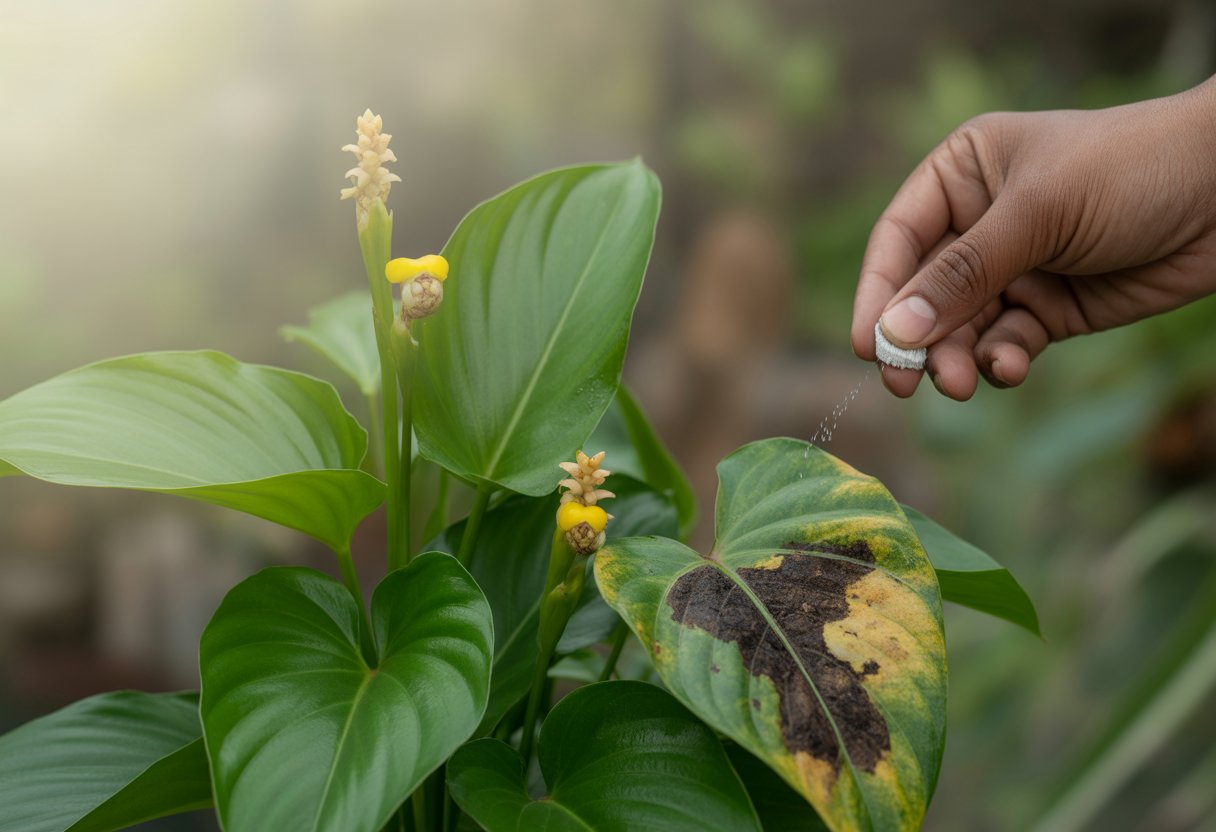
Most wild ginger headaches come from the wrong light, soggy or heavy soil, or pests like slugs and aphids. If you tweak the shade, fix up the drainage, and use targeted pest control, you’ll save yourself a lot of hassle.
When you know what your particular wild ginger likes—especially if it’s a regional variety—your odds of success go way up. Healthy foliage and sturdy roots? Totally possible, and honestly, wild ginger’s one of the more dependable groundcovers out there.
Growing Conditions and Care Requirements
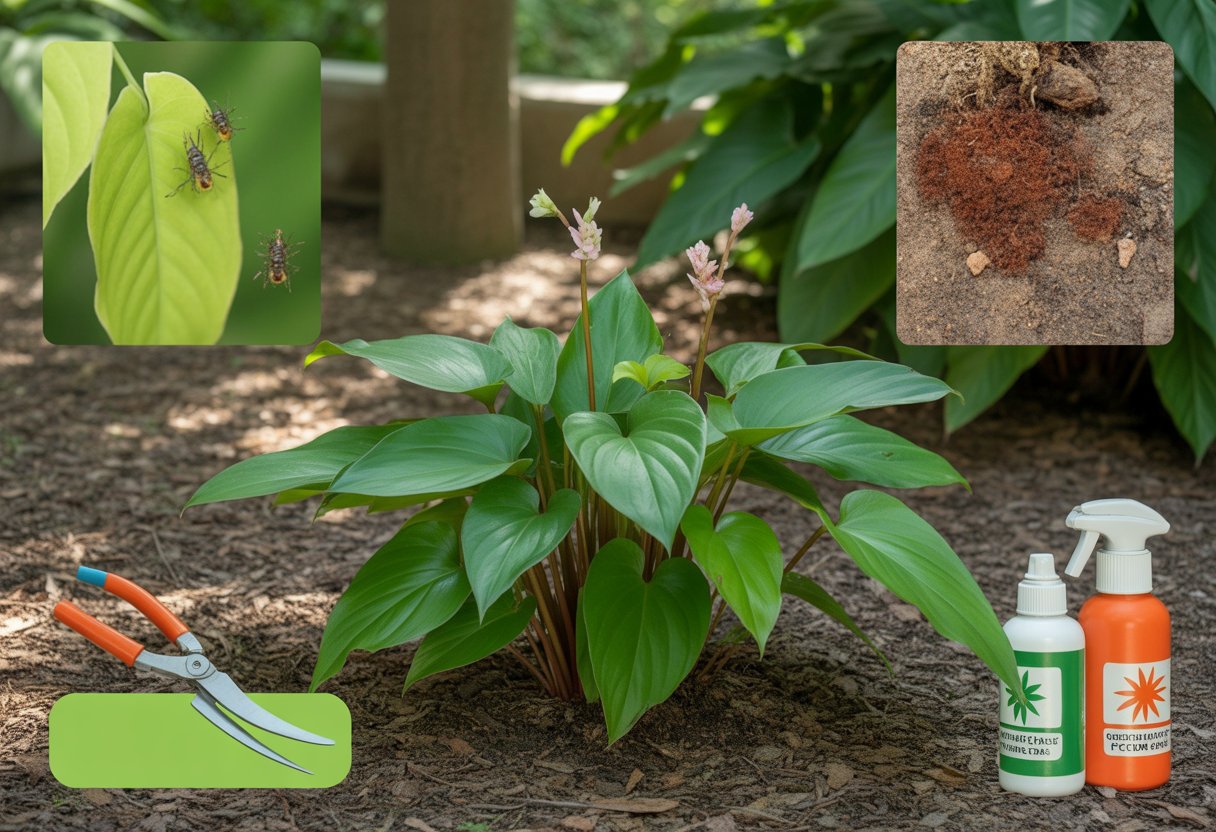
Wild ginger really does better if you pay attention to its basic needs. Soil, moisture, and light make a huge difference for these perennial rhizomes.
Soil Type and Quality
Wild ginger likes rich, well-drained soil with a slightly acidic to neutral pH—think 6.0 to 7.0. Compost or old leaf litter helps mimic its natural forest floor vibe.
It’ll tolerate some soil quirks, but heavy clay or swampy spots? Nope, that’s asking for root rot. Mulch keeps things steady, holding in moisture and feeding the soil as it breaks down.
You don’t need to bury wild ginger deep—just below the surface is fine. The rhizomes want loose, nutrient-rich soil to stretch out and spread.
Light and Location Preferences
You’ll get the best results if you plant wild ginger in full to partial shade. It’s used to living under trees, not baking in the sun.
Too much sun will burn the leaves and slow things down. Dappled light or a bit of morning sun works well.
Shade keeps the soil moist too, which wild ginger loves—especially if you live somewhere warm. Pick a spot out of strong winds and wild temperature swings, and you’ll have less to worry about.
Watering and Moisture Management
Wild ginger wants consistently moist soil, but not puddles. If you’re in a dry spell, water it regularly, especially if it’s new or in a pot.
Water deeply, but let the top inch dry out a bit between waterings. Mulch helps keep the root zone cool and damp.
Don’t let the soil dry out completely—wild ginger hates drought. Still, don’t drown it either, or you’ll end up with fungal problems.
Common Problems Affecting Wild Ginger
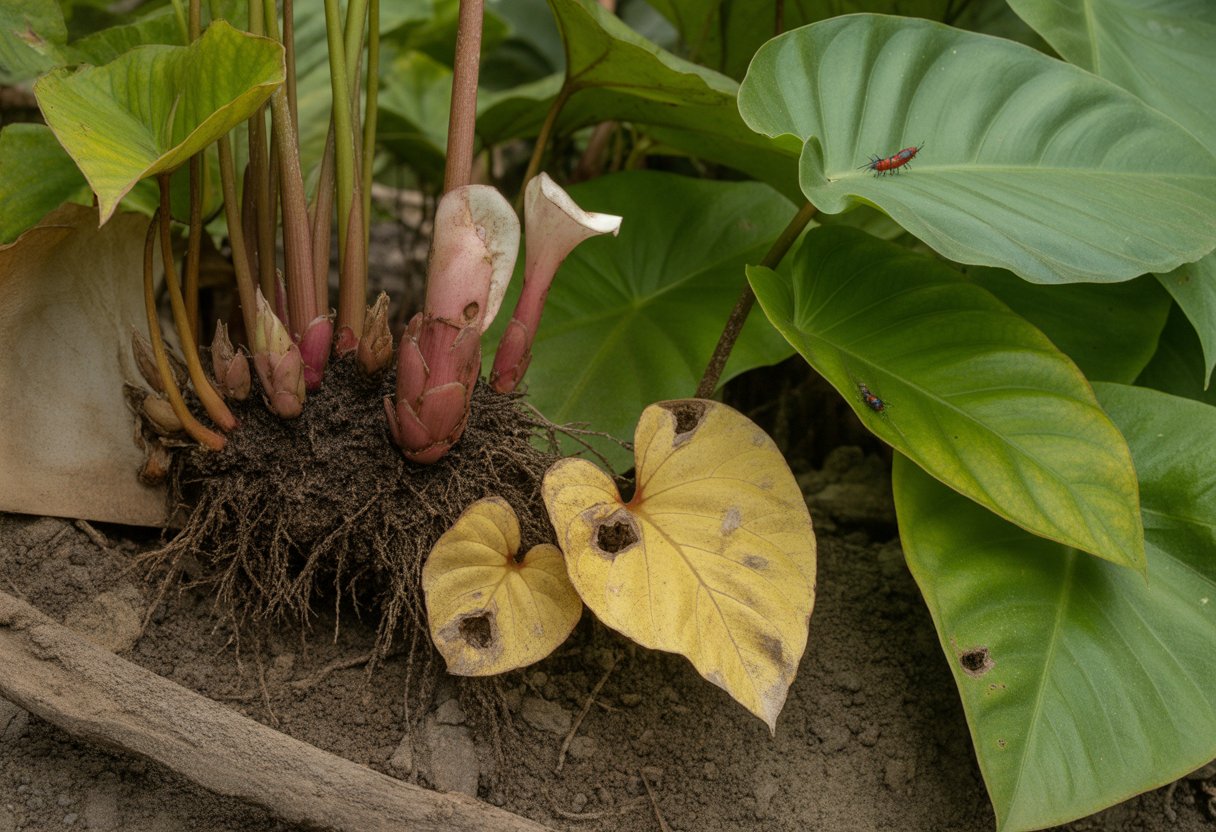
Wild ginger, whether it’s Asarum canadense or Asarum europaeum, faces a few predictable problems. Pests, disease, and lighting issues all show up from time to time.
If you catch these early, you’ll keep those heart-shaped leaves looking sharp.
Pest Damage from Slugs and Snails
Slugs and snails love wild ginger’s soft leaves. They chew holes and leave the foliage ragged, especially on younger plants.
This kind of damage can slow growth and make the plant more vulnerable to infection. Try copper tape, hand-picking at dusk, or eco-friendly baits to keep the slimy crowd at bay.
Keep things less damp if you can—slugs hate dry surfaces.
Disease and Fungal Issues
Root rot and leaf spot hit wild ginger if the soil stays soggy. Leaf spots show up as dark blotches, messing with photosynthesis.
Root rot causes wilting and off-color leaves, and it can wipe out the whole plant. Give your ginger some space and don’t water from above.
Mulch helps stop soil from splashing up and spreading spores. If things get out of hand, you might need a fungicide, but good airflow and drainage usually prevent most problems.
Improper Lighting or Overexposure
Wild ginger wants to live in the shade, just like in the woods. Too much sun burns the leaves, turning them yellow or brown around the edges.
If light’s too low, growth slows and leaves get pale. Filter sunlight through trees or use shade cloth if you have to.
Move pots or adjust garden spots as the seasons change. Watch the leaves—if they’re looking off, lighting might be the issue.
Solutions and Prevention Strategies
You’ll want to focus on soil, pests, and the environment to keep wild ginger healthy. Just paying attention to drainage, watering, and pest control can solve a lot of headaches.
Soil Amendments for Improved Drainage
Wild ginger likes moist, well-draining soil. Compost makes soil fluffier and keeps water from pooling.
If your soil’s heavy, mix in coarse sand or fine gravel. Mulch around the base keeps things damp but not swampy.
Turn the soil and add fresh compost every season to break up hard patches. Don’t plant in spots where water sits after rain—that’s just asking for rot.
Organic Pest Control Approaches
Slugs and snails are the usual suspects. Crushed eggshells, diatomaceous earth, or copper tape around the plants can slow them down.
Let birds and toads do some of the work—natural predators make life easier. Pick off slugs by hand in the early morning or at dusk if you’re up for it.
Skip broad-spectrum pesticides. They’ll mess up the balance and hurt helpful bugs. Healthy soil and sturdy plants mean fewer pest problems anyway.
Optimizing Water and Light Conditions
Wild ginger likes steady moisture but hates soggy roots. Set up a watering routine that keeps soil damp but not soaked. Watering in the morning cuts down on fungal issues.
Stick to full or dappled shade—it’s what wild ginger wants. Too much sun just stresses the plant and scorches the leaves.
Change how often you water as the weather shifts. Mulch helps keep things even, so you won’t need to water as much during dry spells.
Propagation, Varieties, and Toxicity Concerns
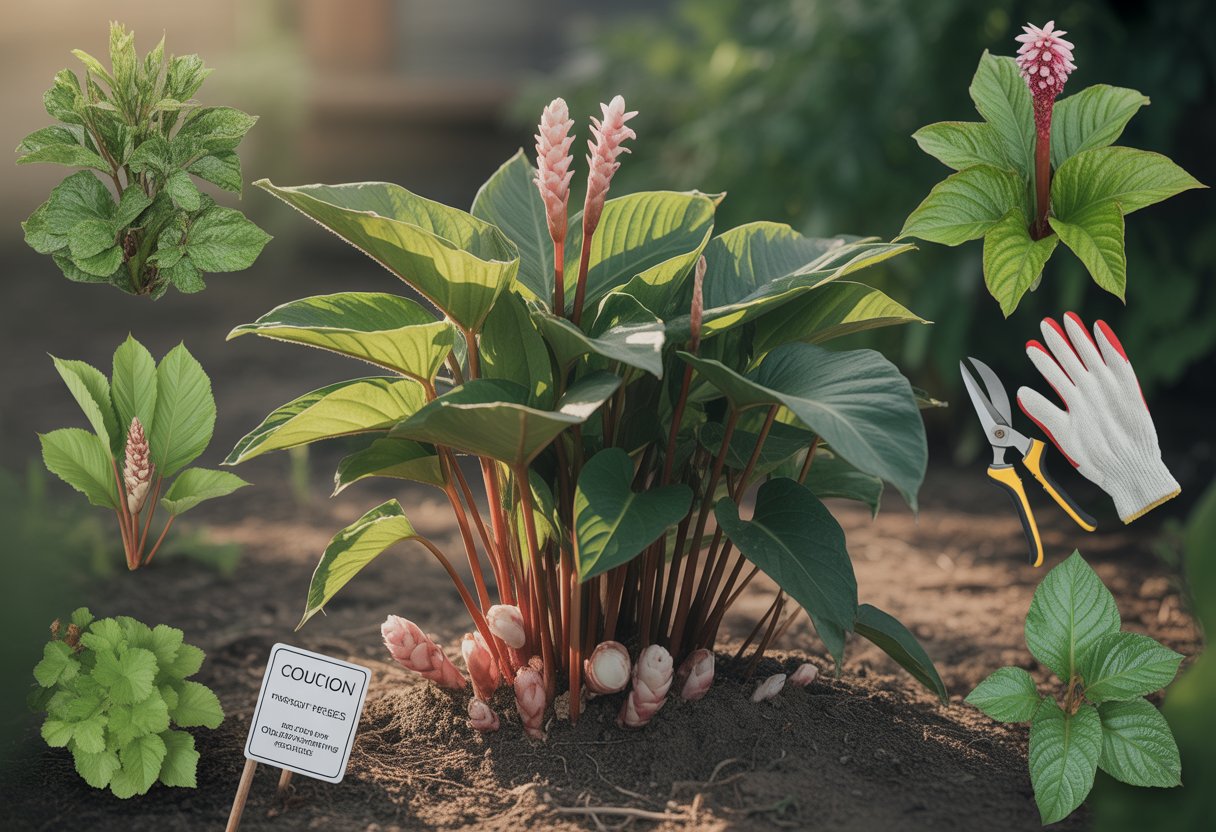
If you want to grow more wild ginger, you’ll need to know about propagation, the best varieties, and a little about toxicity. Seed germination can be tricky, but dividing rhizomes is pretty straightforward.
Some species, like Asarum canadense and Asarum europaeum, have their own quirks. And don’t forget—wild ginger contains aristolochic acid, so handle with care.
Propagation by Seeds and Rhizomes
You can multiply wild ginger by dividing rhizomes or, less reliably, by seed. Rhizome division is easiest—do it in spring or fall and make sure each chunk has some roots.
Seeds take patience. They need cold stratification (a few weeks in the fridge), and even then, they can take months to sprout.
Keep the soil moist and shady for seedlings. The process is slow, but that’s just how wild ginger rolls.
Choosing and Growing Different Varieties
Asarum canadense and Asarum europaeum are the main choices for gardens. Canadense likes moist, shady spots and has heart-shaped leaves with reddish-brown, hidden flowers.
Europaeum does well in lime-rich soil, handles a bit more sun, and sports glossy, dark green leaves. Both work well in woodland gardens, but don’t plant them where it’s dry or exposed.
Pair wild ginger with companions like Dicentra or Tiarella—they like the same conditions. Give wild ginger space, since it doesn’t compete well with aggressive groundcovers.
Understanding Aristolochic Acid Toxicity
Some wild gingers crank out aristolochic acid—a compound that’s been tied to kidney damage and even cancer in humans. Asarum canadense has less of it, but honestly, it’s still risky if you eat it.
This toxin sets wild ginger apart from the culinary ginger we all know and love. Culinary ginger is safe and pretty much everywhere, but wild ginger? Not so much.
You can handle wild ginger without much worry. Just don’t eat it, especially the underground bits, since those pack more aristolochic acid.
If you’re into herbal medicine, you really need to pay attention. Mixing up wild and culinary ginger can get you into trouble, and nobody wants an accidental poisoning on their hands.

